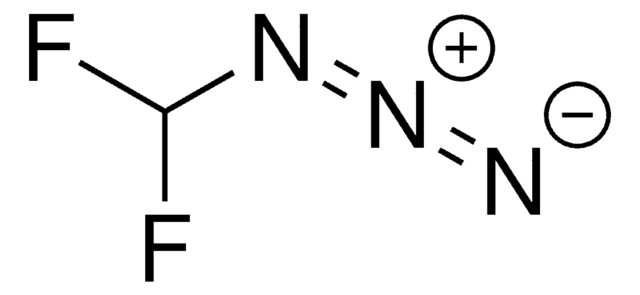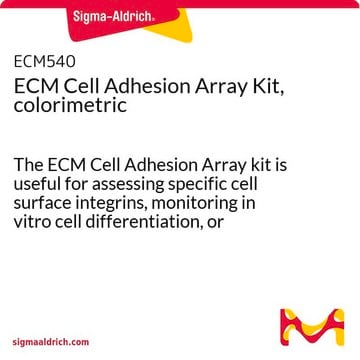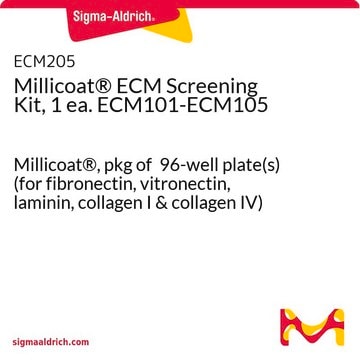ECM541
ECM Cell Culture Optimization Array (Colorimetric, 96-Wells)
About This Item
Recommended Products
technique(s)
cell based assay: suitable
Quality Level
input
sample type: human embryonic stem cell(s)
sample type epithelial cells
sample type mesenchymal stem cell(s)
sample type pancreatic stem cell(s)
sample type neural stem cell(s)
sample type: mouse embryonic stem cell(s)
sample type induced pluripotent stem cell(s)
sample type hematopoietic stem cell(s)
detection method
colorimetric
General description
How does the ECM Cell Culture Optimization Array work?
The foundation of our kit is a 96-well microtiter plate containing several commonly-used ECM proteins. Collagen I, laminin, fibronectin, and vitronectin are arrayed in triplicate with concentrations ranging from 0.125 μg/mL to 20 μg/mL. You simply culture your cells on the plate, and use the included reagents to block, stain, and analyze the adhesion capacity with a plate reader. We have extensively tested and optimized this kit on a variety of cell types including HEK293 cells, and human and rodent neural stem cells.
Application
Cell Structure
Packaging
Components
- ECM Gradient Array Plate: One 96-well plate with 12 strips
- 30%BSA: (Part No. CS201638) One vial - 0.5mL
- Cell Stain Solution: (Part No. 90144) One bottle - 20 mL.
- Extraction Buffer: (Part No. 90145) One bottle - 20 mL
- Assay Buffer: (Part No. 2003646) One bottle - 100 mL
Storage and Stability
Legal Information
Disclaimer
Signal Word
Danger
Hazard Statements
Precautionary Statements
Hazard Classifications
Eye Irrit. 2 - Flam. Liq. 2
Storage Class Code
3 - Flammable liquids
Certificates of Analysis (COA)
Search for Certificates of Analysis (COA) by entering the products Lot/Batch Number. Lot and Batch Numbers can be found on a product’s label following the words ‘Lot’ or ‘Batch’.
Already Own This Product?
Find documentation for the products that you have recently purchased in the Document Library.
Our team of scientists has experience in all areas of research including Life Science, Material Science, Chemical Synthesis, Chromatography, Analytical and many others.
Contact Technical Service









